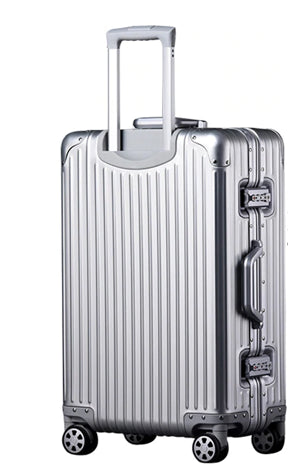FREE SHIPPING AND NO MINIMUM SPEND FOR ALL ORDERS!
FREE SHIPPING AND NO MINIMUM SPEND FOR ALL ORDERS!
Accessories
Check out our full lineup of yoga accessories to help you with your daily meditation practice and fitness goals...
Try our new Cork Yoga Brick for soft but solid support
Check out our full lineup of yoga accessories to help you with your daily meditation practice and fitness goals...

What is a TSA Lock?
2 min read
What is a TSA Lock?

TSA stands for Transport Security Administration. The TSA is the US version of The Australian Customs.
The US requirement is for TSA officers to be able to inspect any bag and the contents coming into a US airport. This is standard operating procedure as part of the end to end screening process which includes electronic screening and dog patrols to protect travellers. Bags are mostly opened and checked for any contraband or explosive devices.

The TSA has worked with Travel Sentry who have built the TSA approved system including locks with a dual feature. A TSA approved lock (or carrying the Travel Sentry Approved logo) secures the luggage for the traveller and allows the TSA to get access to the bag should the need arise. The lock owner has control of the lock through the combination. The TSA has access to the lock through a masterkey that can open the lock.
If access is needed in the US, non-TSA locks will be cut and discarded. They can also more easily be broken on conveyors than built-in TSA locks.
The system is used at all airports in the USA and Canada, and major airports in Brazil, Dominican Republic, Germany, Denmark, Netherlands, Finland, Belgium, Norway, Czech Republic, Lithuania, Sweden, Latvia, Austria, Estonia, Switzerland, Hungary, Malta,Turkey, UAE, Israel, Togo, China, Japan, South Korea, Australia, New Zealand and Ivory Coast.
Can Australian Customs Open a TSA Lock?
According to Travel Sentry, Australian major airports are using the system so Australian Customs are equipped to open TSA locks. TSA locks are not a requirement in Australia.
Check out the comprehensive map of airports here:
https://www.travelsentry.org/
Another popular travel tip for extra security for your luggage is to use cable ties. You can buy these for a few dollars for a packet of a hundred or so from a hardware store. Use these to secure your zips and bags. This is a good deterrent for thieves or worse and if you discover the ties are cut you will know if your bag has been tampered with. Keep a nail file or small scissors in an outer pocket of a checked in bag to cut the cable ties at the other end of your journey.
We hope these tips will help you better protect your luggage and property and help you have a great adventure!
We would love to help you with your travel needs https://besmashing.com.au/
Leave a comment
Comments will be approved before showing up.